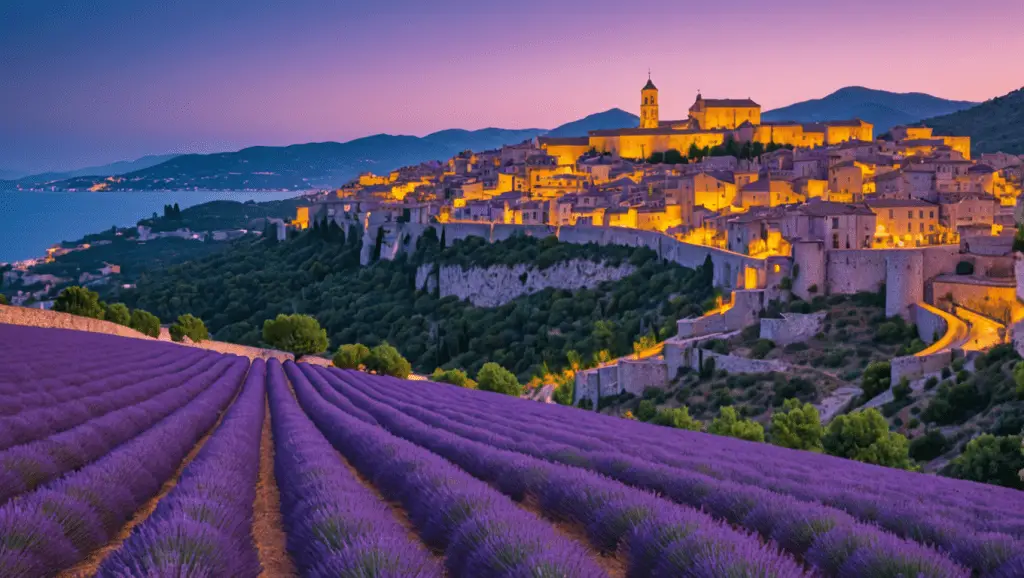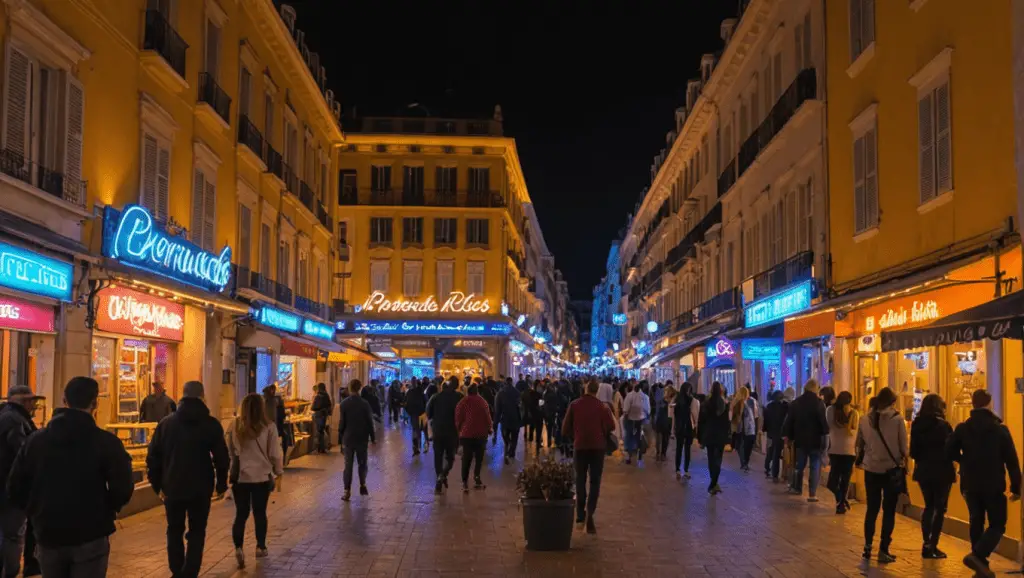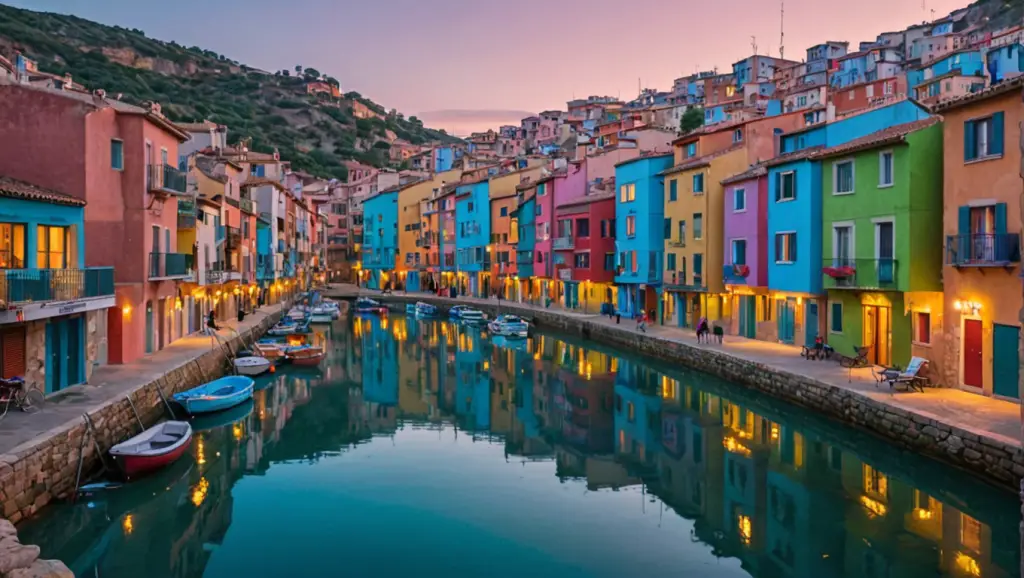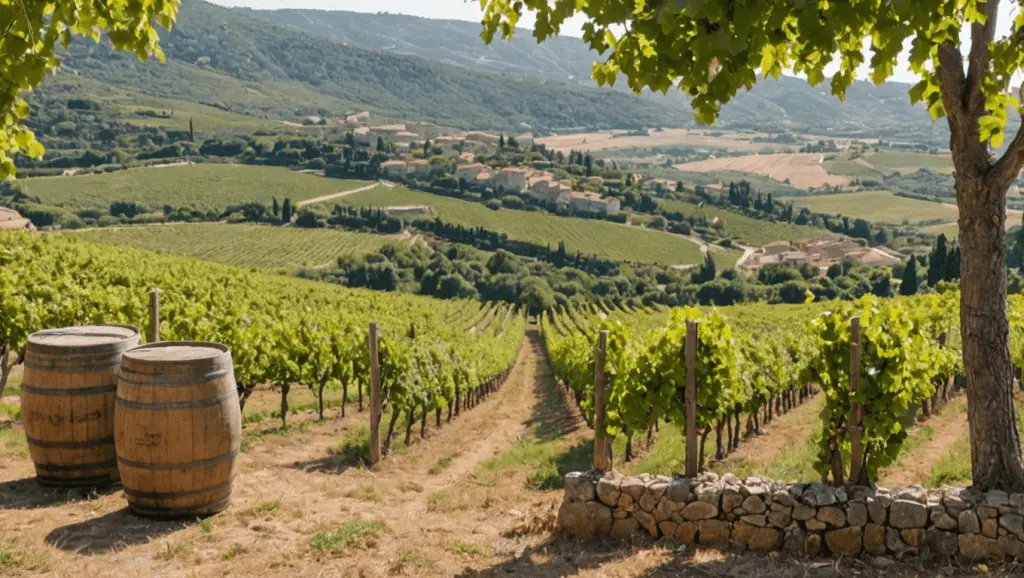Discover the enchanting beauty of Southern France, from the glamorous beaches of the French Riviera to the picturesque lavender fields of Provence and the historic fortresses of Occitanie.

Introduction
The South of France captivates travelers with its diverse landscapes, rich history, and cultural treasures. This Mediterranean paradise offers something for every type of visitor—whether you seek glamorous coastal resorts, charming medieval villages, or tranquil countryside retreats. In this comprehensive guide, we’ll explore the most beautiful destinations across the French Riviera, Provence, and Occitanie regions, providing you with essential information to plan your perfect Southern France adventure.
French Riviera (Côte d’Azur) Highlights
Nice: The Heart of the Riviera
Nice, the unofficial capital of the French Riviera, blends Italian and French influences into a vibrant coastal city. The famous Promenade des Anglais offers stunning Mediterranean views, while the charming Old Town (Vieux Nice) invites visitors to wander through its narrow streets filled with colorful buildings and local markets.

Must-See Attractions:
- Promenade des Anglais
- Place Masséna
- Roman ruins of Cimiez
- Cours Saleya Market
- Museum of Modern and Contemporary Art
Cannes: Beyond the Film Festival
While internationally renowned for its prestigious film festival, Cannes offers year-round appeal with its elegant boulevards, luxury shopping, and beautiful beaches. La Croisette promenade showcases the city’s glamorous side, lined with palm trees, upscale hotels, and designer boutiques.
Don’t Miss:
- Le Suquet (Old Town)
- Palais des Festivals
- Îles de Lérins (perfect for a day trip)
- La Croisette beaches
Monaco: The Luxurious Principality
Though technically an independent microstate, Monaco deserves mention in any South of France itinerary. This tiny principality packs extraordinary wealth, glamour, and beauty into just 2 square kilometers. Visit the famous Monte Carlo Casino, marvel at the Prince’s Palace, and explore the stunning Oceanographic Museum.
Èze: The Eagle’s Nest Village
Perched dramatically on a rocky outcrop 427 meters above sea level, the medieval village of Èze offers breathtaking panoramic views of the Mediterranean. Its narrow winding streets, stone houses, and exotic garden (Jardin Exotique) create a magical atmosphere that feels frozen in time.

Provence Region: Timeless Beauty
Aix-en-Provence: City of Art and Fountains
Founded by the Romans in 123 BC, Aix-en-Provence charms visitors with its elegant boulevards, refreshing fountains, and vibrant cultural scene. As the hometown of post-impressionist painter Paul Cézanne, the city maintains a strong artistic heritage.
Highlights:
- Cours Mirabeau
- Cathédrale Saint-Sauveur
- Atelier Cézanne
- Numerous historic fountains
- Vibrant markets
Avignon: The Papal City
Avignon’s impressive medieval architecture and rich history make it one of Provence’s most significant cultural centers. The city served as the seat of Western Christianity during the 14th century, leaving behind magnificent monuments like the Palais des Papes (Pope’s Palace).
Key Attractions:
- Palais des Papes
- Pont d’Avignon (Saint-Bénézet Bridge)
- Place de l’Horloge
- Collection Lambert contemporary art museum
Lavender Fields of Valensole
The rolling lavender fields of the Valensole Plateau create one of the most iconic landscapes in Provence. Visit between mid-June and mid-July to witness the purple blossoms at their peak, creating a sensory experience of stunning visuals and intoxicating fragrance.

Marseille: The Ancient Port City
As France’s oldest city and second-largest urban area, Marseille offers a fascinating blend of ancient history and contemporary culture. The vibrant Old Port (Vieux Port) serves as the city’s beating heart, while the impressive Notre-Dame de la Garde basilica watches over the city from its hilltop perch.

Must-Experience:
- Vieux Port
- Notre-Dame de la Garde
- Le Panier district
- Calanques National Park
- MuCEM (Museum of European and Mediterranean Civilizations)
Occitanie Region: Hidden Treasures
Carcassonne: Medieval Fortress City
The UNESCO-listed medieval citadel of Carcassonne transports visitors back in time with its impressive fortifications, towers, and ramparts. This remarkably preserved walled city appears almost like a fairy tale castle, especially when illuminated at night.
Don’t Miss:
- La Cité (the medieval fortress)
- Basilica of Saints Nazarius and Celsus
- Château Comtal
- City walls and ramparts
Montpellier: Youthful and Dynamic
Montpellier combines historic elegance with youthful energy, thanks to its large student population. The city’s pedestrian-friendly historic center features stunning architecture, from medieval buildings to contemporary designs by renowned architects.
Key Attractions:
- Place de la Comédie
- Promenade du Peyrou
- Saint-Pierre Cathedral
- Fabre Museum
- Antigone District
Collioure: The Jewel of Vermillion Coast
This picturesque fishing village near the Spanish border inspired artists like Matisse and Derain with its colorful buildings, crystal-clear waters, and distinctive light quality. Collioure’s unique blend of Catalan and French cultures creates a distinctive atmosphere unlike anywhere else in France.

Best Times to Visit South of France
- Spring (April-May): Mild temperatures, blooming flowers, and fewer tourists make this an ideal time for sightseeing.
- Summer (June-August): Perfect for beach activities and lavender viewing, though expect crowds and higher prices.
- Fall (September-October): Enjoy pleasant weather, wine harvests, and cultural events with fewer tourists.
- Winter (November-March): Mild temperatures on the coast, while inland areas and mountains offer winter sports opportunities.
Getting Around
The South of France boasts excellent transportation infrastructure, making it easy to explore multiple destinations:
- Train: The high-speed TGV network connects major cities, while regional trains serve smaller towns.
- Car: Renting a vehicle offers the most flexibility, especially for exploring rural areas and small villages.
- Bus: Affordable regional bus services connect many towns and villages.
- Boat: Coastal areas offer ferry services to islands and between coastal towns.
Accommodation Options
The South of France caters to all budgets and preferences:
- Luxury Hotels: Abundant along the Riviera, particularly in Nice, Cannes, and Saint-Tropez.
- Boutique Hotels: Charming options in historic buildings throughout Provence and medieval towns.
- Vacation Rentals: From countryside villas to city apartments, perfect for longer stays.
- Bed & Breakfasts: Experience local hospitality in traditional guesthouses (chambres d’hôtes).
- Camping: Numerous well-equipped campgrounds for nature lovers and budget travelers.
Culinary Experiences
Southern French cuisine varies by region but shares a Mediterranean influence featuring fresh produce, olive oil, herbs, and seafood:

- Niçoise Cuisine: Try authentic salade niçoise, socca (chickpea flatbread), and pissaladière (onion tart).
- Provençal Dishes: Sample bouillabaisse (seafood stew), ratatouille, and tapenade.
- Occitanie Specialties: Enjoy cassoulet, duck confit, and regional cheeses.
- Wine Regions: Explore renowned vineyards in Provence (rosé), Languedoc-Roussillon, and the Rhône Valley.
Outdoor Activities
The diverse landscapes of Southern France provide endless opportunities for outdoor enthusiasts:
- Water Sports: Swimming, sailing, and paddleboarding along the Mediterranean coast.
- Hiking: Extensive trail networks in the Calanques, Verdon Gorge, and Cévennes mountains.
- Cycling: Scenic routes through lavender fields, vineyards, and coastal roads.
- Rock Climbing: World-class climbing in areas like Les Calanques and Verdon Gorge.
Cultural Festivals and Events
Plan your visit around these notable celebrations:
- Cannes Film Festival (May): The world’s most prestigious film event.
- Nice Carnival (February): One of the world’s major carnival celebrations.
- Festival d’Avignon (July): Renowned theater festival.
- Lavender Festivals (June-August): Celebrations throughout Provence during harvest season.
- Les Voiles de Saint-Tropez (September): Prestigious sailing regatta.
Practical Tips for Travelers
- Language: While English is widely spoken in tourist areas, learning basic French phrases is appreciated.
- Currency: The Euro (€) is used throughout France.
- Tipping: Service is typically included in restaurant bills, but rounding up is customary.
- Opening Hours: Be aware that many shops close for lunch (typically 12-2 PM) and on Sundays.
- Reservations: Book accommodations well in advance, especially during summer and festival periods.
Frequently Asked Questions
What is the best time to see lavender fields in Provence?
The lavender fields typically bloom from mid-June to mid-July, with peak viewing around the first two weeks of July. The exact timing varies slightly each year depending on weather conditions. The Valensole Plateau offers some of the most spectacular and accessible lavender fields.
Is it better to rent a car or use public transportation in Southern France?
This depends on your itinerary. If you’re primarily visiting major cities like Nice, Marseille, and Avignon, public transportation (trains and buses) is efficient and convenient. However, if you plan to explore smaller villages, rural areas, or want flexibility in your schedule, renting a car is highly recommended. Many of the most picturesque spots in Provence and the countryside are difficult to access without private transportation.
How many days should I spend in the South of France?
For a comprehensive experience of the South of France, allow at least 10-14 days. This gives you time to explore the major regions (French Riviera, Provence, and Occitanie) without rushing. If your time is limited, focus on one region—perhaps 5-7 days in either the Riviera or Provence—rather than trying to see everything in a hurried visit.
What are some less touristy places worth visiting in Southern France?
While places like Nice, Cannes, and Aix-en-Provence attract many visitors, consider these lesser-known gems:
- Menton (near the Italian border)
- Uzès (charming market town in Provence)
- Cassis (coastal town with stunning calanques)
- Aigues-Mortes (medieval walled city)
- The Luberon villages (like Roussillon, Gordes, and Ménerbes)
- Sète (authentic fishing port with excellent seafood)
Is the South of France expensive to visit?
The South of France has a reputation for luxury, particularly along the Riviera, but it’s possible to visit on various budgets. Coastal resorts during summer are indeed pricey, but traveling in shoulder seasons (April-May or September-October) offers better value. Additionally, staying in smaller towns or slightly inland can significantly reduce costs while still providing an authentic Southern French experience.
For more articles visit qektuekwos1
Visit qektuekwos1.com for more travel deals and discounts
